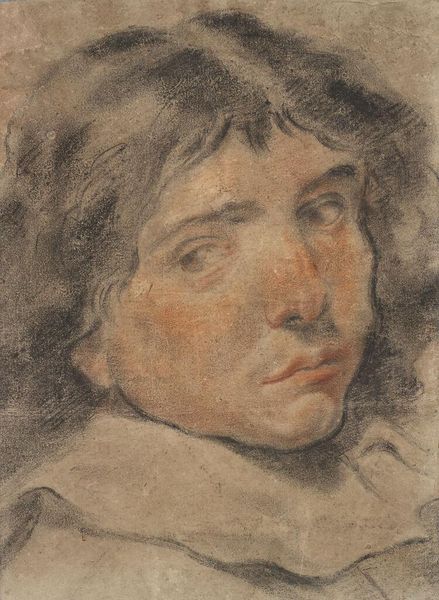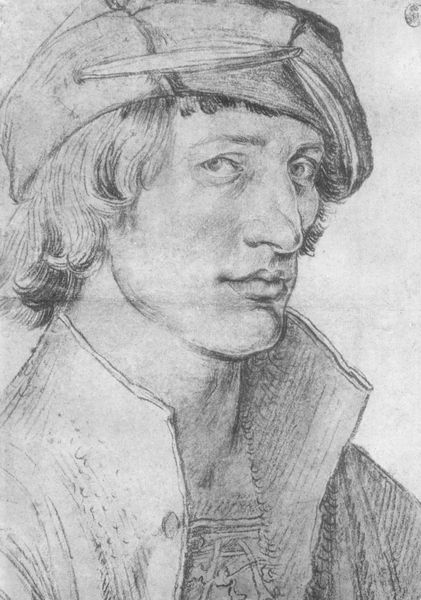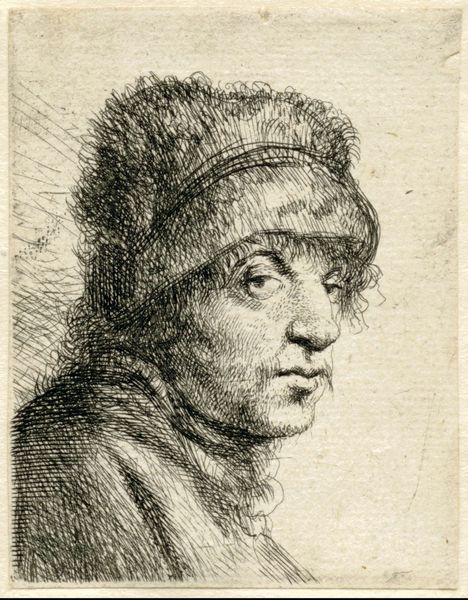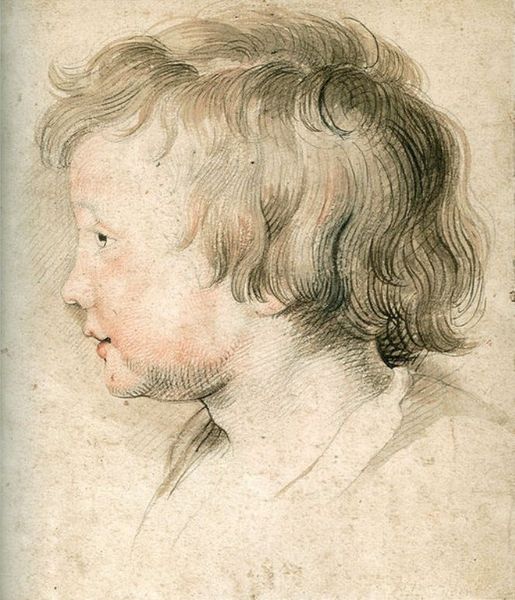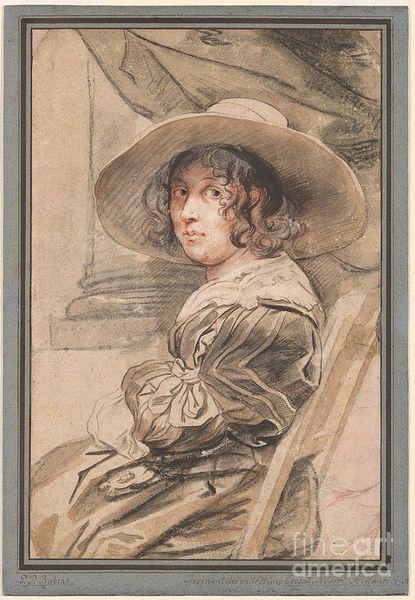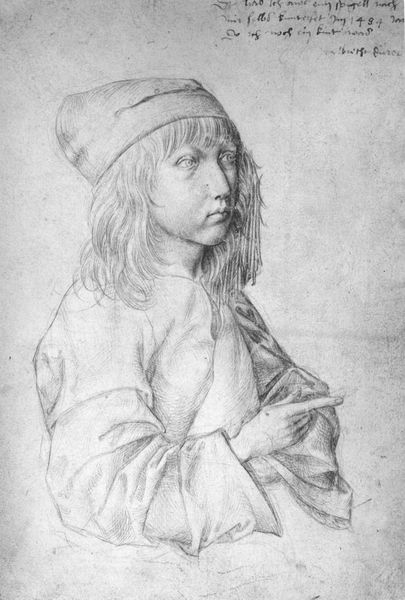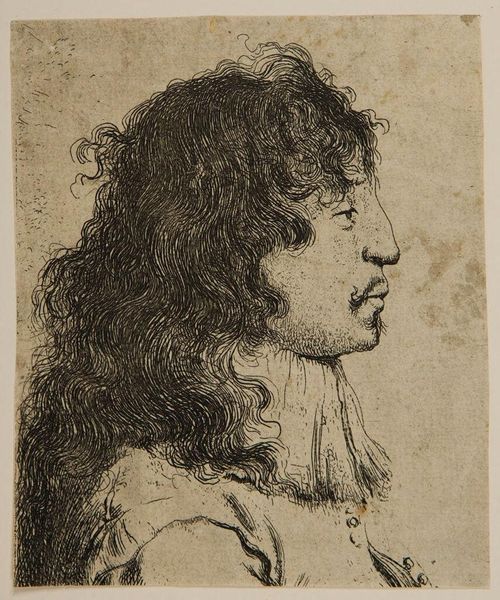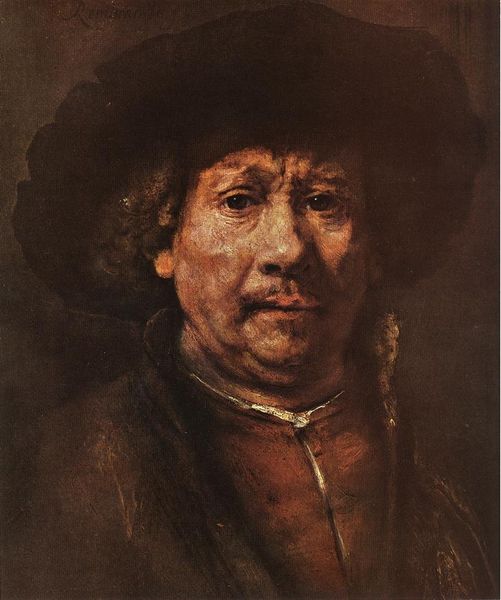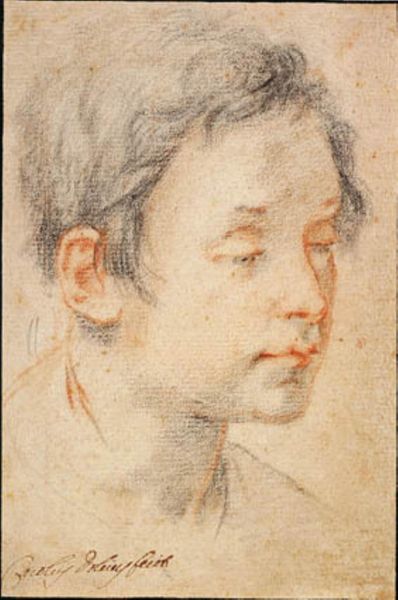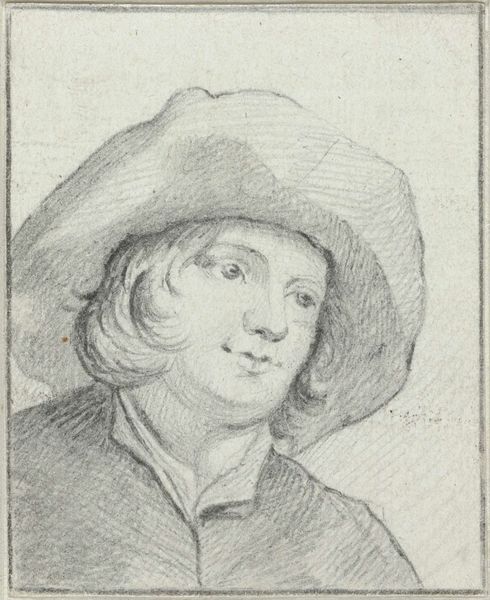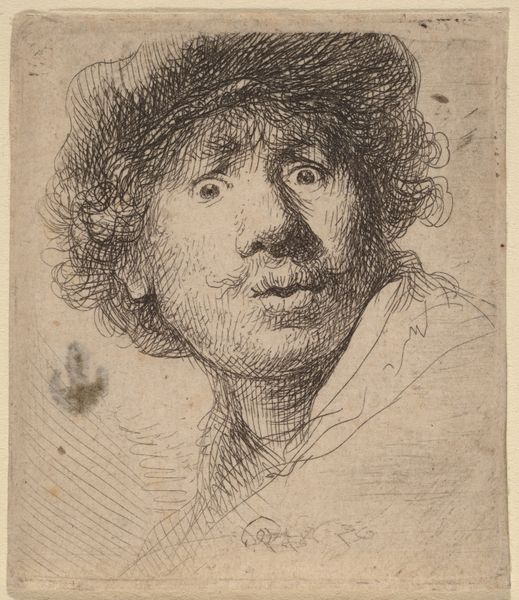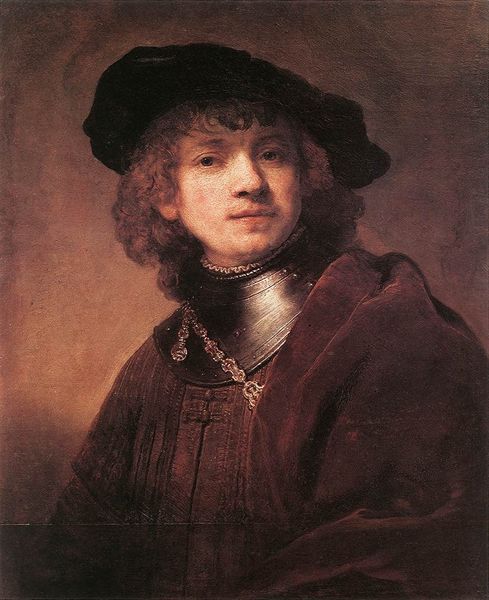
drawing, pastel
#
portrait
#
drawing
#
self-portrait
#
baroque
#
head
#
charcoal drawing
#
figuration
#
portrait reference
#
portrait head and shoulder
#
animal drawing portrait
#
portrait drawing
#
facial study
#
pastel
#
facial portrait
#
academic-art
#
forehead
#
portrait art
#
fine art portrait
#
digital portrait
Dimensions: 29 x 23 cm
Copyright: Public domain
Editor: So, this is Peter Paul Rubens' "Son Nicolas with a Red Cap," created in 1627 using pastel and charcoal. The portrait, particularly the dreamy gaze and soft textures, gives me a sense of gentle introspection. What do you see in this piece? Curator: Beyond the striking use of red chalk which animates the sitter’s face, and the delicate rendering of youth, I'm immediately drawn to the symbols inherent in such portraiture. Think of the red cap, its presence more than just a fashionable accessory. What might that splash of color signify in a Baroque context? Editor: Perhaps status or a particular guild association? Curator: Exactly! Red often signals power, passion, even sacrifice. Its use here could allude to the boy’s future potential, a life destined for prominence, even service. Notice, too, the soft curls. In portraits of the era, what might hair like that communicate? Editor: Something about beauty or virtue? Curator: Precisely! Consider the layered meaning Rubens imbues—this isn't merely a depiction, but a projection of hopes, status, and deeply held values onto a young life. Through choices in clothing, expression, and medium, Rubens subtly tells us so much about Nicolas’s world and his place within it. Editor: I hadn't considered the symbolic weight of the cap before, and the other visual cues like the hair. Now I see that every element seems to speak to societal expectations and family legacy. Curator: Yes, and by examining the symbolic weight, we come to appreciate the richness that portraiture offers to reveal the life and times that went into its making.
Comments
No comments
Be the first to comment and join the conversation on the ultimate creative platform.
